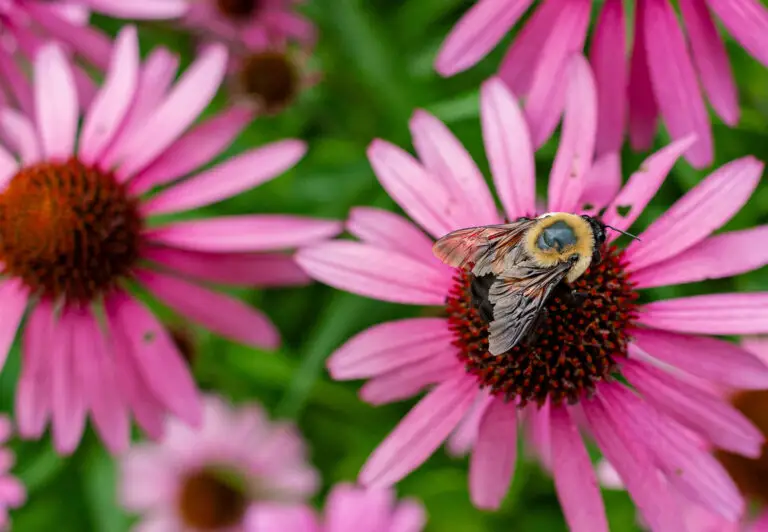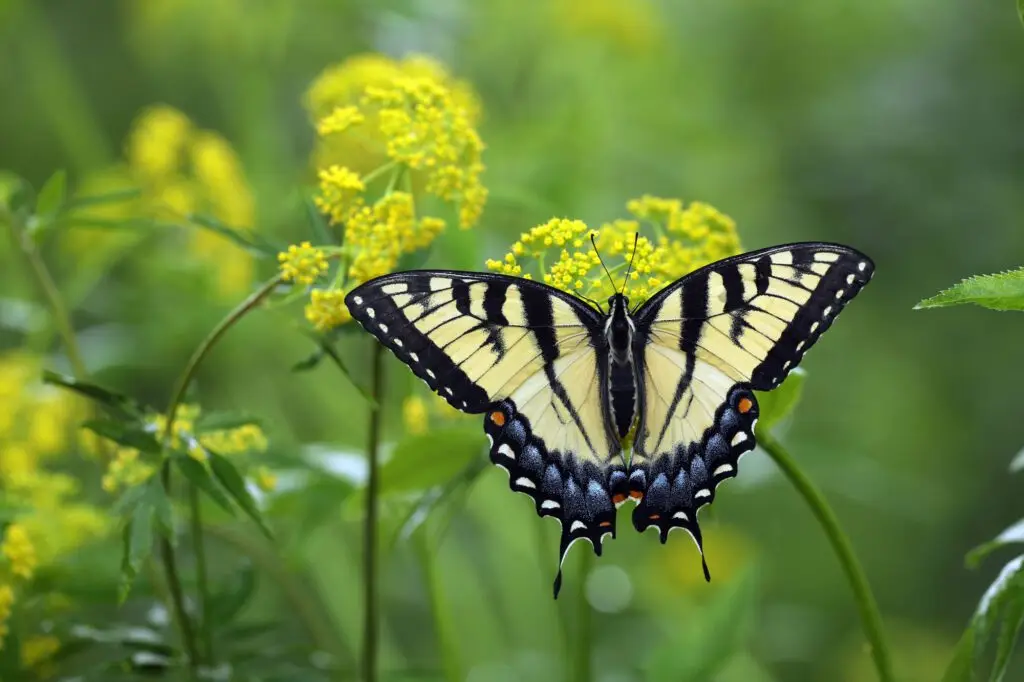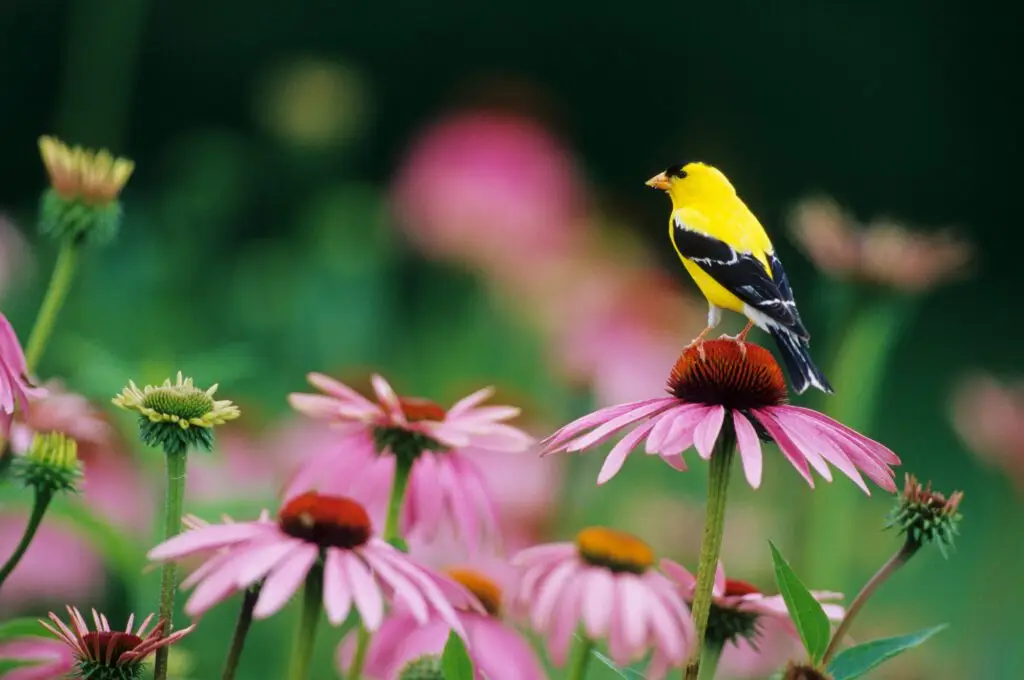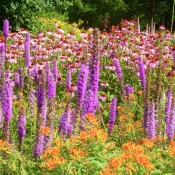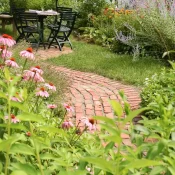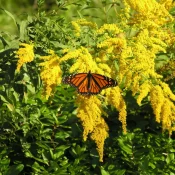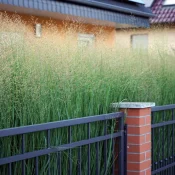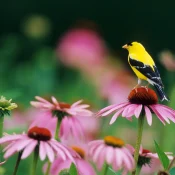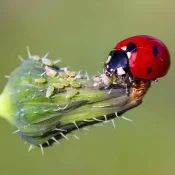Will native plants bring too many bugs to my yard?
Native plants will bring bugs into your yard, along with birds and beneficial pollinators like butterflies and bees. Bug-eaters like songbirds and ladybugs help balance out any potential negative effects from other types of insects—especially when you don’t use pesticides.
Finally, native plants don’t breed or invite mosquitoes: standing water brings mosquitoes. So plant away, native plant lovers! 🐞
Many American gardeners have faced the frustration of dealing with pest problems, whether caterpillars on tomato plants or mites on houseplants. As you start planting native species and attracting beneficial insects, you might worry about increased pests ruining your time outside. In this article, we’ll address these concerns and offer tips on reducing bug issues while enjoying the benefits of native gardening.
First, let’s introduce the players:
Good bugs vs. bad bugs
As we all know, not all bugs are bad. We’ve all learned in childhood that there are good bugs like ladybugs, bees, and butterflies. We can organize bugs by their human annoyance/gardening problems factors into the following groups:
- Bad bugs (biting or destroying kinds): aphids, gnats, Japanese beetles, mosquitoes, noseeums
- Good bugs (pollinators): bees, butterflies, moths, some beetles
- Good bugs (that eat bad bugs): ladybugs, praying mantis
Native plants attract all these groups to your garden, and then a magical thing happens: the birds come.
The important bad bug question: do native plants attract mosquitoes?
Standing water brings mosquitoes—not plants. Mosquitoes need standing water to breed. Keeping your yard free of standing water and properly maintaining bird baths, fountains, and other water features helps reduce mosquitoes. What you plant will not draw more mosquitoes into your yard, but having stagnant water will.
So, to be clear:
Native plants do NOT attract mosquitoes. Remove standing water to reduce mosquitoes.
Native plants attract good bugs (like pollinators)
All the movie star creatures we associate with happy gardens—bees, hummingbirds, butterflies—do important work as pollinators. And all those happy, beautiful bugs and animals have one thing in common: they all love native plants.
The pollinators in your area have evolved to find native plants. They have been preparing to see, find, smell, and eat native plants for hundreds—even thousands!—of years. So every native plant in your garden will attract bugs: the good kind, like pollinators.
Introducing the good bugs that eat bad bugs
Pollinators are not the only important good bugs in the garden. There are also good bugs like ladybugs that eat bad bugs, that help keep bad bugs—like aphids—in check.
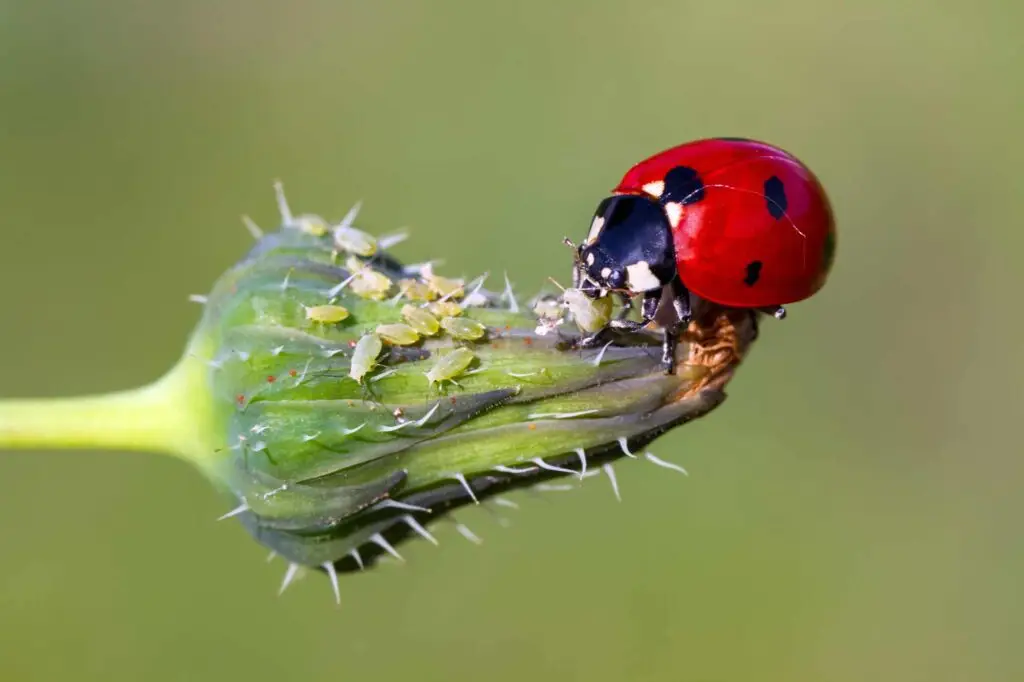
Ladybugs are natural pest control
Apologies in advance if you thought ladybugs were gentle insect vegans! These beautiful native creatures are in fact total bug terminators, who chow down on bad bugs like aphids. (A single ladybug can eat up to 50 aphids in a day.)
And don’t worry—ladybugs DO NOT bite humans.
While ladybugs can be a welcome sight when it comes to pest control, there is another surprising bug vacuum cleaner that we need to invite into our gardens: birds.
Native plants = more birds (and less bugs)
When there are more native plants, there are more bugs which also means more birds, particularly songbirds. All the classic songbirds birds we associate with North America—blue jays, finches, orioles, robins—eat mostly bugs, especially in the nesting season. And they eat A LOT of bugs. Without lots of bugs, we won’t have birds.
Songbirds need to eat thousands of bugs to raise babies
In the spring, songbirds’ appetite increases dramatically as parents make eggs and chicks eat food. According to the University of Delaware, “in the United States, 432 species—more than one-third of birds—are insectivorous.” Any reductions in bugs directly impact songbirds’ ability to survive.
The Carolina Chickadee will happily eat 6,000 of your bugs
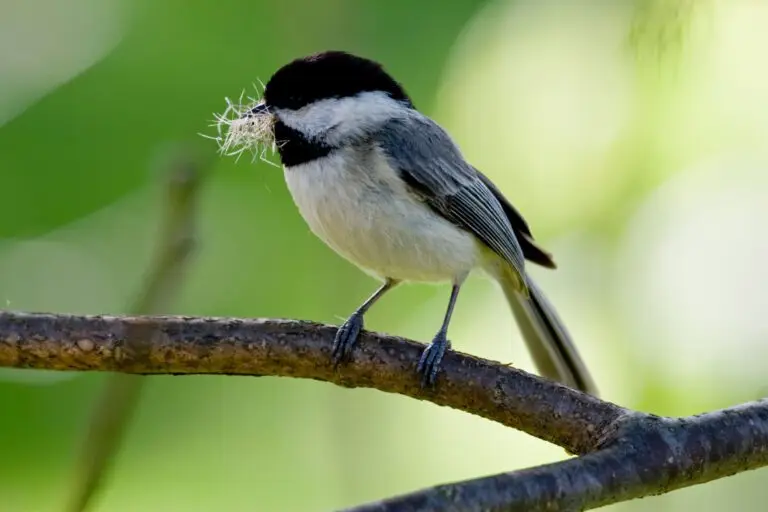
A good example of how bugs and songbirds keep each other in check is the Carolina Chickadee. These sweet birds eat almost entirely insects during their breeding season—bugs like caterpillars and spiders are their primary snack favorites. The Cathance River Alliance sums up a chickadee’s bug needs perfectly:
“Carolina chickadees need 6,000 – 9,000 caterpillars to fledge a single nest of baby birds. They can’t travel far to search for food. If all they have access to is a sterile lawn and ornamental, non-native trees, they won’t find food.”
WOW—that appetite helps with bug problems! Native plants will bring more bugs. But the beautiful songbirds will be ready to happily hoover up the influx. Without enough bugs to eat—and songbirds need A LOT of bugs!—songbirds are unable to survive.
What happens to birds if a yard doesn’t have native plants?
Another quote from the University of Delaware’s newspaper (featuring Doug Tallamy):
“Properties landscaped with non-native plants become population sinks for the chickadees that need insects to reproduce and survive.”
Yikes. Let’s get planting native ASAP 🌱
Finally, we have to mention bats
Although we rarely see them, bats are also fantastic bad bug helpers. One bat can eat thousands of mosquitoes in a single night. According to the U.S. Forest Service:
“Scientists have discovered that some small bats can catch up to 1,000 or more small insects in a single hour. A nursing mother bat eats the most – sometimes catching more than 4,000 insects in a night.”
YEP. That is a real statistic! If you’re worried about mosquitoes, think about adding a bat house on your property.
No pesticides make a huge impact
Finally, to get all the natural cycles working together to keep bad-bug populations down, committing to no pesticides is key. Chemical pesticides chase away the butterflies, which removes the caterpillars, which turn the garden into a food desert for songbirds. When this happens, bad bug populations can thrive.
Put all this together and it balances out
Once you plant native and don’t use pesticides, a beautiful thing happens. The songbirds hang out and chow down on thousands of bugs. Bats do mosquito clean-up while you sleep. And did you know that hummingbirds need bugs to survive, too? And the ladybugs come in. All these creatures come and help hoover up quite a bit of any increased bug visitors. Nature balances itself out.
In conclusion, combining no pesticides + the trifecta of bad bugs, good bugs, and birds helps keep bugs in check. Each of these elements together balances out the potential negative effects of other types of insects.
Wondering how to get started on your native garden? Start here:
Sources
- Cathance River Education Alliance. “Doug Tallamy: A Guide to Restoring the Little Things that Run the World.” Cathance River Education Alliance, March 22, 2022. https://www.creamaine.org/doug-tallamy-a-guide-to-restoring-the-little-things-that-run-the-world/.
- U.S. Forest Service. “Pollinators: A Forest Service Conservation Education Topic.” U.S. Department of Agriculture, 2015. https://www.fs.usda.gov/Internet/FSE_DOCUMENTS/fseprd476773.pdf.
- Flint, Mary Louise. “Lady Bugs Need Special Care to Control Aphids in the Garden.” ANR Blogs, University of California, Agriculture and Natural Resources, May 14, 2014. https://ucanr.edu/blogs/blogcore/postdetail.cfm?postnum=13933.
- LaPenta, Dante. “Biodiversity for the Birds.” UDaily. University of Delaware, October 22, 2018. https://www.udel.edu/udaily/2018/october/non-native-plants-birds-insects-washington-chickadee-desiree-narango-doug-tallamy/
- Wray, Amy K., Michelle A. Jusino, Mark T. Banik, Jonathan M. Palmer, Heather Kaarakka, J. Paul White, Daniel L. Lindner, Claudio Gratton, and M. Zachariah Peery. “Incidence and Taxonomic Richness of Mosquitoes in the Diets of Little Brown and Big Brown Bats.” Journal of Mammalogy 99, no. 3 (June 1, 2018): 668–674. https://doi.org/10.1093/jmammal/gyy044.
- Hoff, Stephanie. “Study Bolsters Bats’ Reputation as Mosquito Devourers.” University of Wisconsin–Madison News, May 22, 2018. https://news.wisc.edu/study-bolsters-bats-reputation-as-mosquito-devourers/.
